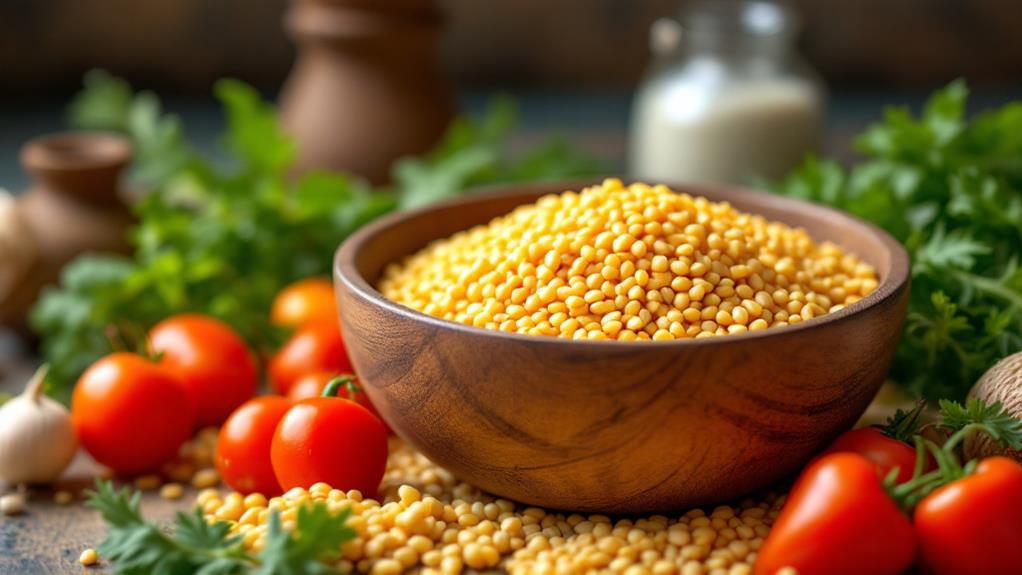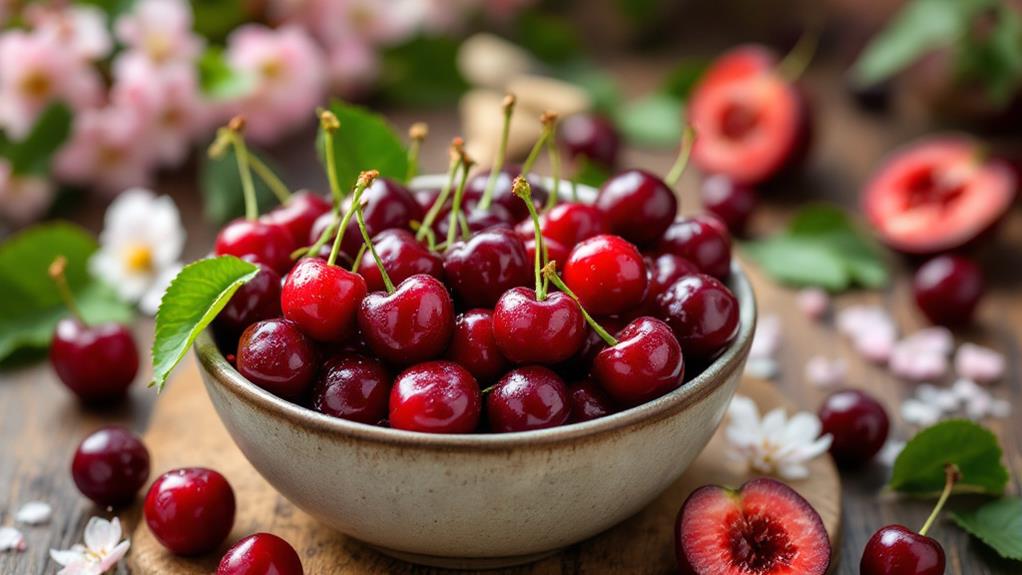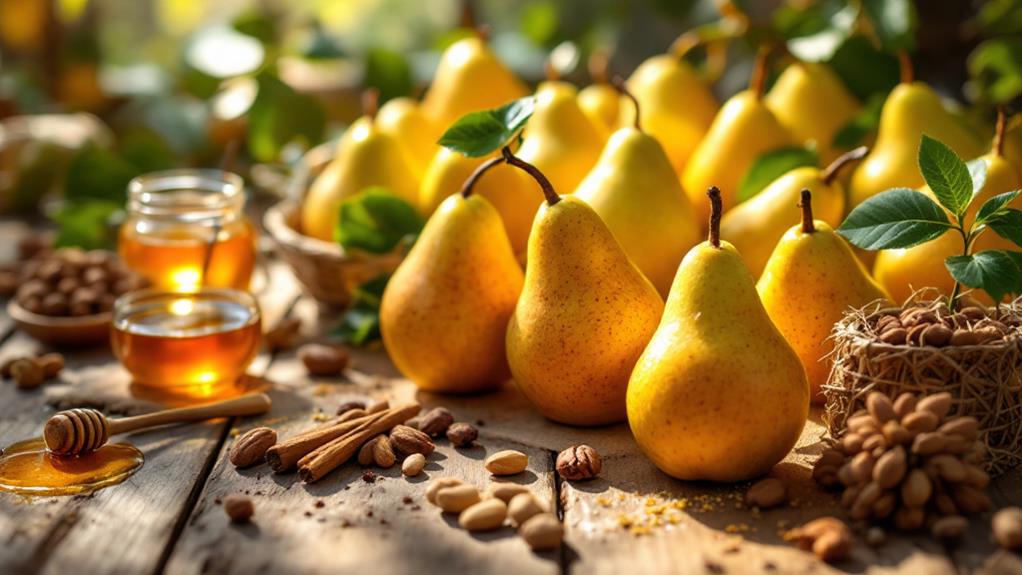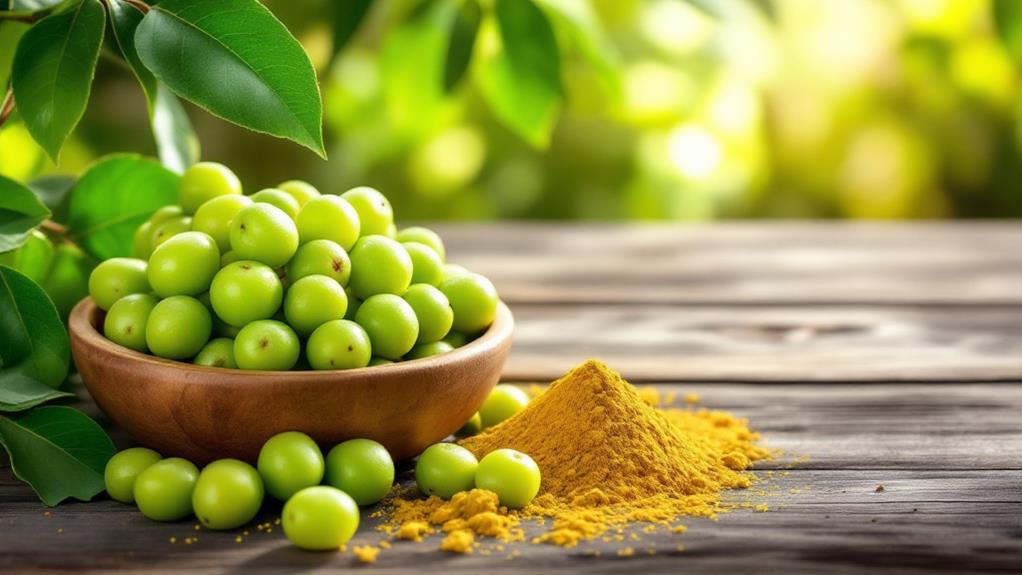A Detailed Guide to Olives: Health Benefits and Culinary Uses
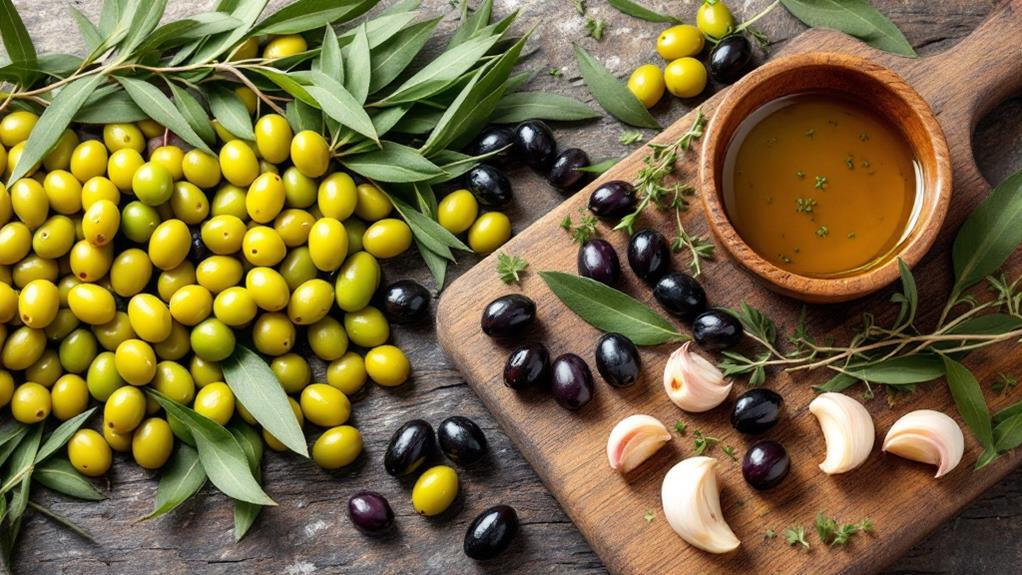
Olives are a flavorful staple in Mediterranean cuisine and are packed with health benefits. They're rich in monounsaturated fats, primarily oleic acid, which is great for heart health. You'll find powerful antioxidants, like vitamin E, that support cognitive functions and fight inflammation. Add olives to salads, charcuterie boards, or pizzas for a burst of flavor. Tapenade spreads offer a savory twist, and olive oil improves a variety of dishes with healthy fats. Be mindful of their sodium content, especially if you have hypertension. Investigate the fascinating world of olives and reveal their full nutritional and culinary potential.
Nutritional Profile of Olives
When examining the nutritional profile of olives, you'll find that they pack a punch with their high-fat content and low carbohydrate levels. In a 3.5-ounce (100 grams) serving, olives contain around 116 calories, 0.8g of protein, 6g of carbohydrates, and a notable 10.9g of fats. Most of these fats are monounsaturated, primarily oleic acid, making up about 74% of the total fat content. This makes olives a great source of healthy fats that are known for numerous health benefits.
Olives are not just about fats; they also provide significant antioxidants, including vitamin E, which adds to their nutritional profile. A serving of 10 olives offers around 59 calories along with 1.6g of fiber, supporting a low-carb diet while contributing beneficial fiber content. However, keep in mind that olives can be high in sodium, especially if they're brined. A single green olive might contain approximately 62.4mg of sodium, so it's essential to monitor your intake if you're watching your sodium levels.
Antioxidants and Health Benefits
While olives boast a robust nutritional profile, their real strength lies in their abundance of antioxidants. These powerful compounds, including vitamin E and polyphenols, work diligently to neutralize free radicals, which can cause oxidative stress in your body. By doing so, olives can considerably reduce inflammation and support your general health.
One of the most notable health benefits of olives is their positive impact on heart health. The antioxidants in olives, such as hydroxytyrosol and oleuropein, play a crucial role in protecting against LDL oxidation, which is a key factor in the development of atherosclerosis. By preventing this oxidation, olives help reduce the risk of chronic diseases and promote a healthier cardiovascular system.
Moreover, the flavonoids found in olives, like quercetin, offer both antioxidant and anti-inflammatory properties. These benefits extend beyond the heart, supporting cognitive function and potentially lowering the risk of neurodegenerative diseases, such as Alzheimer's. The high antioxidant content in olives can help maintain brain health as you grow older.
Incorporating olives into your diet offers a delicious way to enjoy their impressive health benefits while safeguarding your body against the damaging effects of free radicals.
Culinary Uses of Olives
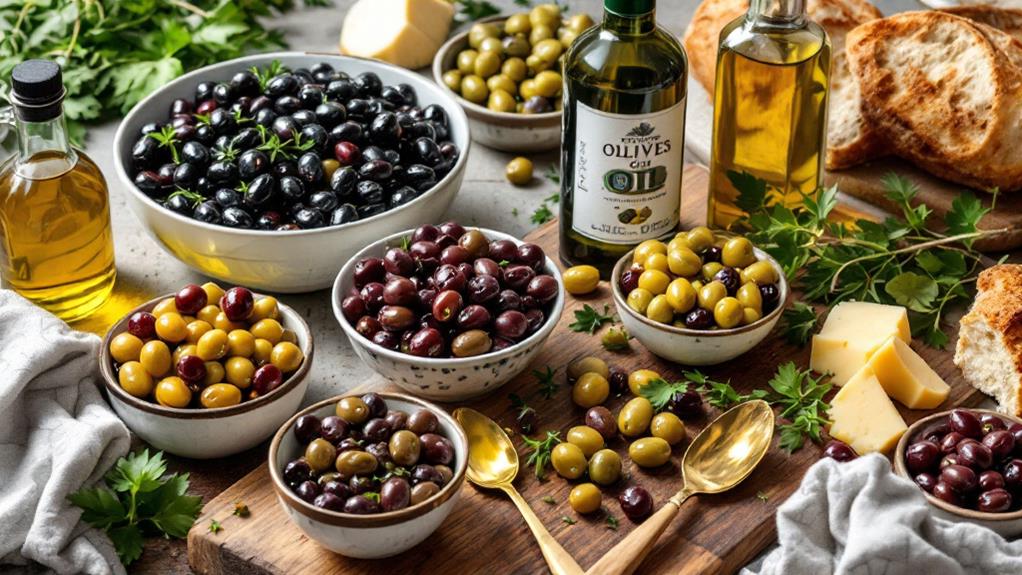
Have you ever wondered how olives can transform your meals? These small, flavorful fruits offer a range of culinary uses that can improve your dishes with both taste and health benefits. Enjoy olives whole as a snack or add them to salads and charcuterie boards for a delightful burst of flavor. They're a staple in Mediterranean cuisine, where they're often marinated with herbs and spices, making them a popular appetizer.
Create a classic tapenade by combining finely chopped olives, capers, and anchovies. Spread it on bread or crackers for a savory treat. Olives also make a versatile topping for pizzas and pastas, enriching your meals with their unique taste and adding healthy fats to your diet.
Olive oil, extracted from olives, is a cornerstone of cooking, thanks to its health benefits. Use it in dressings, marinades, or for sautéing to add depth and richness to your dishes. Whether you're drizzling it over a salad or using it to roast vegetables, olive oil complements flavors beautifully. So, next time you're in the kitchen, remember the power of olives and olive oil to raise your culinary creations.
Processing and Varieties
Olives undergo several processing methods to become the delicious and adaptable ingredient you enjoy. Fresh olives are naturally bitter, so they must be cured before eating. Common curing methods include brining and fermentation, which improve the flavor and reduce bitterness. Processing times differ, ranging from days to months, and often depend on local traditions. There are also methods like lye curing and natural fermentation employed to make olives palatable.
Distinct olive types offer unique flavors and culinary uses. For instance, Spanish green olives are typically pickled, Greek black olives are often consumed raw, and California olives are ripened before pickling. These types not only broaden your culinary options but also provide distinct flavor profiles that can uplift any dish.
When selecting olives, consider their size, categorized by the number of olives per kilo, with descriptors such as Medium, Jumbo, and Mammoth. Proper storage is crucial for maintaining their quality. Oil-packed olives are generally preferred as they degrade more slowly compared to brine-packed ones, which can become too salty over time. Enjoying olives in their different forms may also contribute to health benefits, especially when incorporated into olive oil.
Allergy and Safety Concerns
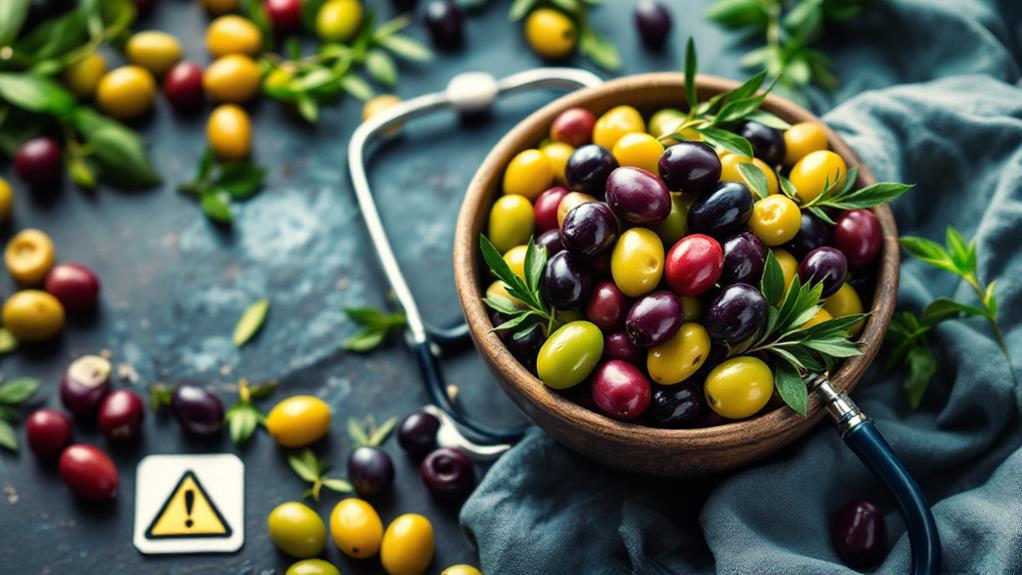
Occasionally, people might encounter allergy or safety concerns when consuming olives. Although olive allergies are rare, some individuals might experience allergic reactions like itching or swelling in the mouth or throat after eating olives. More commonly, allergies are related to olive tree pollen, which can cause respiratory symptoms. If you suspect a sensitivity to olives, consulting a healthcare provider can help determine if an allergy is present and advise on appropriate steps to manage it.
Beyond allergies, safety concerns often revolve around the sodium content found in processed olives. High sodium levels can be problematic, especially for those with hypertension, as excessive intake may lead to increased blood pressure or even hypotension in some cases. To mitigate this, choosing fresh olives or thoroughly rinsing brined varieties can notably reduce sodium content. This simple step makes olives a safer option for those mindful of their salt consumption.
While olives can be a nutritious supplement to your diet, it's crucial to be aware of potential allergies and sodium-related health risks. By taking these precautions, you can enjoy the diverse culinary uses of olives with peace of mind.
Olive Oil and Its Advantages
While being mindful of potential allergies and sodium content in olives is significant, olive oil offers a different set of benefits that can improve both health and culinary experiences. Olive oil, especially extra virgin olive oil, is packed with monounsaturated fats like oleic acid. These fats play an important role in lowering LDL cholesterol levels, consequently reducing the risk of cardiovascular disease. A 2022 study even found that regular consumption of olive oil links to a 19% reduction in cardiovascular disease mortality.
The health benefits don't stop there. Olive oil is rich in antioxidants, such as vitamin E and polyphenols like hydroxytyrosol, which protect your body from oxidative stress and may reduce inflammation. This makes it a vital component of the Mediterranean diet, renowned for promoting longevity, enhancing cognitive function, and lowering the risk of chronic diseases.
Beyond health, olive oil shines in culinary applications. Its high smoke point guarantees it retains health benefits even when heated, making it perfect for salads, marinades, and dipping oils. Regardless of whether you're enhancing flavors or elevating your health, incorporating extra virgin olive oil into your diet offers numerous advantages.

